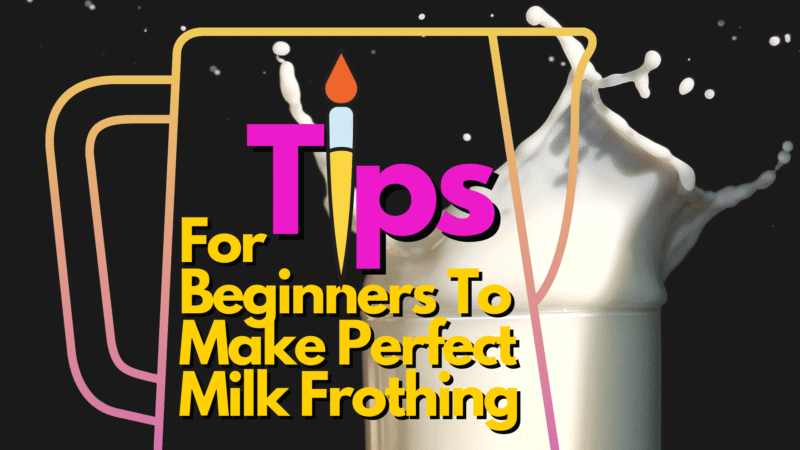If you are purchasing lattes or cappuccinos from a café, you cannot do much about the froth unless you make the drink on your own. The question is how can you make perfect frothing milk when you don’t know anything about it. We got you covered! This article will teach you how to froth milk with just a little effort at home.
Contents
Little Fun Fact
If you are a latte and cappuccino lover, I bet you have tried those drinks at your favorite coffee shop. Have you ever felt the differences, especially the taste, of those cappuccinos and lattes based on different places?
Why do some drinks taste better than others although they are made from the same ingredients?
Well, the answer is very simple. The taste of each cappuccino and latte is different from one another due to the froth or milk foam that lays on top of them. Meaning how to froth milk heavily affects your coffee.
Generally, if you see a collection of tiny bubbles, which you have to look thoroughly to see, on your morning drink, then this means the froth has a smooth texture and is very tasty. However, if you encounter a drink that consists of large bubbles, it means that the froth is parched, flat, and flavorless.

Basic Things About How To Froth Milk
Milk Frothing Pitcher
For beginners, you can buy a handy milk frothing pitcher which is around 350 ml or 12 oz, since the jug is big enough to do milk for a big cup of latte, easy to grip, and can also steam milk using less power.
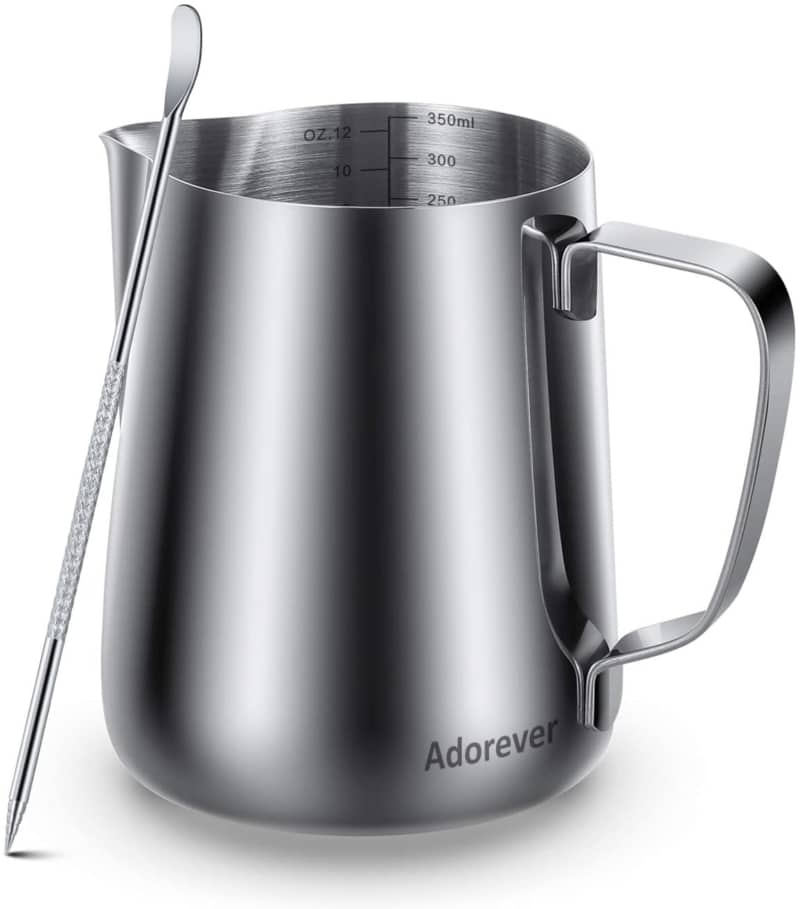
Suitable Steam Temperature
Once you are done with choosing the container, it is time for the milk. We highly recommend you to start with cold milk as it consumes air better; a few people even freeze their containers in the fridge as well. For the filling level, you can try filling the milk below where spout begins to form, which should be about 6 ounces, good for a big cup latte.

In case you think that it is a lot, you can reduce it a bit; however, you probably do not want to increase more than what is mentioned above, the cold milk will develop larger once it becomes frothed milk.
Before going straight to steaming, there are also a few things you need to know as well. You need to make sure that the espresso machine is switched to steam temperature. For some boiler machines, it may take up to one minute to get to the stream temperature; thus, you need to double-check whether you are in the right position or not.
When you know how long it takes for your espresso machine to shift to that stream position, then you can start steaming a couple of seconds prior to the espresso machine showing that it has reached full temperature.
By doing it this way the warming element will not fade away for some espresso machines, creating more milk foam while you are frothing milk.
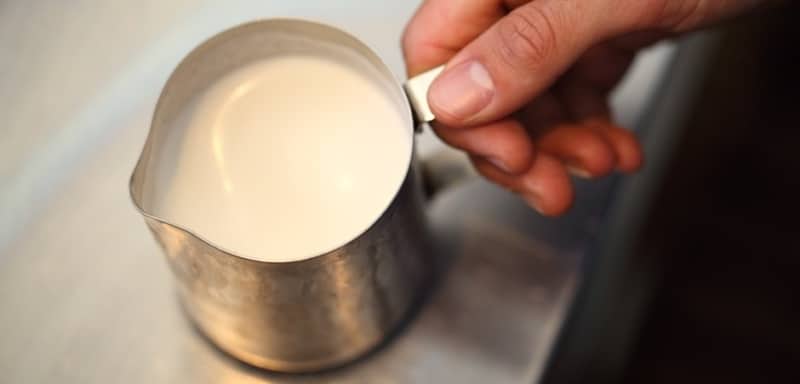
But if you delay until the machine is ready, the heating component might switch off and no longer create steam while you are frothing milk. This may not apply to all boilers or milk frothers, but you can give it a shot with yours and you might end up with additional steam power.
Careful With The Wand
Furthermore, you need to remove your wand right away prior to steaming to eliminate any additional water that is in the steaming circle since you do not want to have more water in the milk.
The moment you are done with frothing milk, you need to rub your wand with the towel to prevent the milk from getting in. Then remove again; this last purge is so crucial because when you’re done with steaming, the milk is still in the tip. Thus, it helps get the milk out.
If you do not purge appropriately, the hot milk out can get back to the boiler, and you will encounter a big mess.

Use Reliable Frothing Thermometer
Moving on to the frothing technique, we must first have some in-depth knowledge about the correct milk temperature and also different types of milk in order to make a perfect milk frothing.
Let us begin with the proper heated milk temperature. Milk temperature is very essential. With the right temperature, it can produce a sweet and creamy texture. The question is:
At what temperature does the milk need to reach in order to have the sweetness and good texture?
Generally, milk becomes sweet at its finest level from 57-66 degrees Celsius. If you go hotter than this, the foamed milk begins to lose its sweetness and will be scalded. To be sure that you are at the right temperature, you may use the most reliable frothing thermometers that you can find.
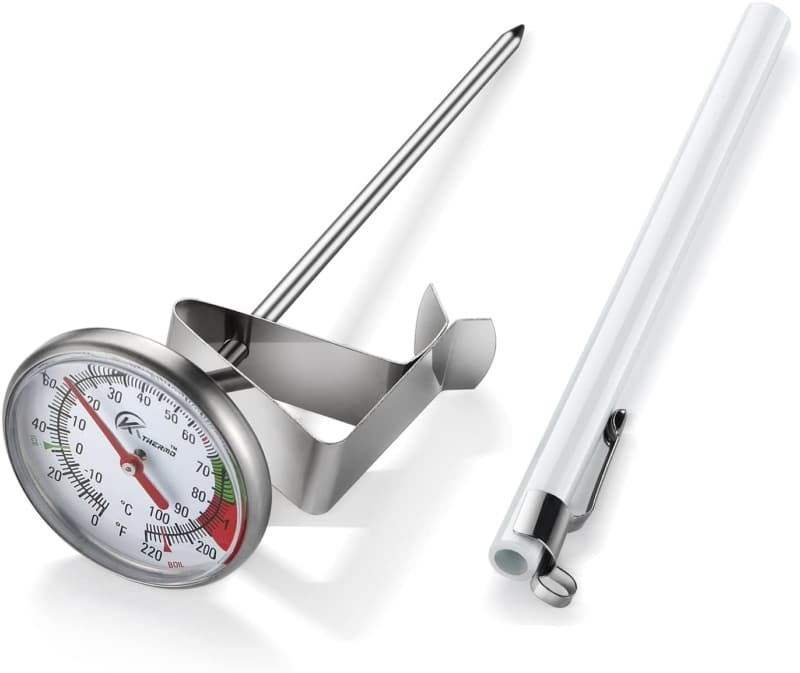
After you shut off the steam, the temperature usually rises up further to around 5 degrees Celsius. Hence, you need to stop the steam before you reach your target temperature point on your thermometer. Nonetheless, if you do not want to spend money on the temperature thermometer, you can also do it by feel.
Judging it by feel, you need to notice the outside of the container. If you start to feel the heating rising and it becomes harder to hold, then it means you have hit a sweet spot; henceforth, you can cut the steam.
Milk Option
One last vital piece of information before we move on to how to froth milk is the types of milk. Different types of milk have different frothing, pouring, and tastes. There are 2 kinds such as dairy and non-dairy. Here are a few notable results of dairy milk: the gold standard is the whole fat dairy milk that scored best in frothing, pouring, and taste.
However, one of the standard milk alternatives in coffee shops is surprisingly almond milk. Subsequently, soy milk is another popular alternative.
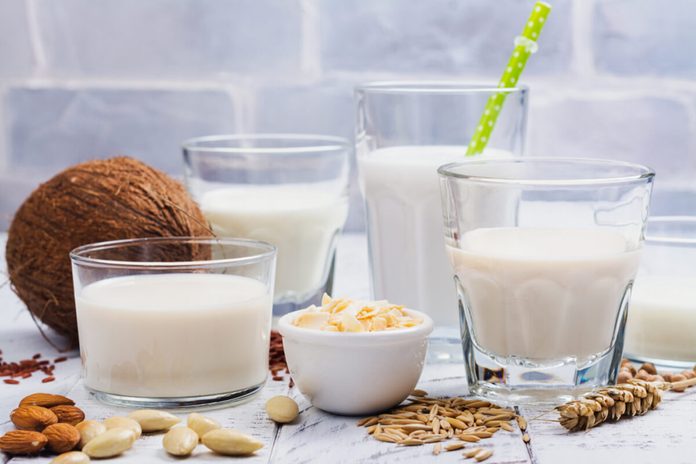
Now, after getting to know some information regarding the whole milk, we can focus on how to froth and use the best frothing technique. It is mostly about seeking an appropriate steam tip position corresponding to the foamy milk’s surface. You may need to start with the steam tips just below the surface of the milk.
If you put it too low, you will not get enough air in whereas if you put it too high, you will get excessive air and make a huge mess. Next, you may change the depth and along the way, you will hear the rip that shows the small amount of air that is being gulped into the warm milk.
The start of the process is exactly the same for both micro-foam and airier froth. Yet, the afterward process is a bit different. And, how to skim milk for Latte? You should have the air in as fast as you can, for when it is colder milk, it takes in the air better. After seeing the outside of the jug that you use get warmer, all air should be in.
So, you may position your wand into the heated milk deeply and search for a tip position and angle that causes the frothy milk to rotate or roll. The roll fundamentally reduces a few large bubbles and mixes the whole milk to generate an even texture via the pitcher.
On the other hand, talking about airier milk frother for cappuccinos, you may remain to suck in rips of air a bit longer than the latte and may also analyze the froth based on the growth in the jug. When you get to your target volumes, you can decrease the height of the wand a little into the milk and linger the rolling.
Once reaching the desired temperature of yours, you can shut off the steam then purge the jug, clean the wand, and do the last purge to get the remaining foamy milk out of the steam wand for both latte and cappuccino. In some cases, if you still find some larger bubbles still exist when you have completed the steaming already, you can tap and spin the container a few more times to help break and mix them up together.
How To Froth Milk For Fundamental Latte Art Skills

Once you know more about the basic and essential information and techniques, we can now move on to latte art, precisely about improving how to froth milk or creating latte art. Below are 5 techniques that are the foundations of pouring latte art. These foundations can allow you to move to more advanced skills with ease.
1. The in and out
Firstly, you just tip the mug to make a deeper part of espresso. After that, you can just pour into the center of the espresso immediately to blend the frothed milk with the espresso (pour milk too slow will lead the milk floating on the drip coffee whereas too fast will flip the cream over). So, here you can practice throwing the milk blog, again and again, to become good at it.
2. The blog and push
After mastering throwing the blog of milk, you need to remain on blending the milk and espresso together until your cup is half full. Subsequently, you can pour the milk on the side of the cup nearby to your hand. So, in here you can train to push the blobs to the other side of the cup.
3.The wiggle and push (shape and pattern)
Once you are done with technique 2, you now can wiggle, or move side-to-side (not shake), you jug in a rotating action. Follow up by wiggling again, and then push the blog to the far side of the cup while wiggling.
4. The wiggle and drawback
You may start to push back once you have wiggled and pushed the blog of milk to the other side of the cup. You may keep on staying at the back of the cup and keep moving side-to-side. Eventually, you may start to drawback to continue the rose shape.
5. Drawing a line through to finish it off
The last point is about lifting the jug as you drawback over the pattern. However, you should be cautious with the line. If this is done well, it will pull the pattern in and produce even more shape to your latte art.
No Money? So Expensive? No issues!
There is also another way that you can practice the skill without wasting milk and coffee. You can just use pure water and two drops of dish soap, which is similar to the frothed milk.
In addition to that, we just need to use a drop of food coloring to the water in the latte mug for contrast and apply the soapy froth to pour your pattern art. Then you are done. You can froth milk without buying milk and espresso, but you do not want to drink that one.

Final Thought
Now you know a few tips for beginners on how to froth milk perfectly. All you have to do is just know the basic concepts of how to froth milk, some information regarding the milk, and techniques of frothing. And the last one is the frothing skills, which is about practicing and practicing until you see a huge improvement in the quality of your latte art, the consistency of your pouring, and indeed the control you need to nail every time!
Keep on working hard…
Learning how to froth milk may take time, but do not be discouraged because you have plenty of time to get it right. The taste will be a little bit sweeter than other drinks you have bought because you have made it by yourself!
References:
